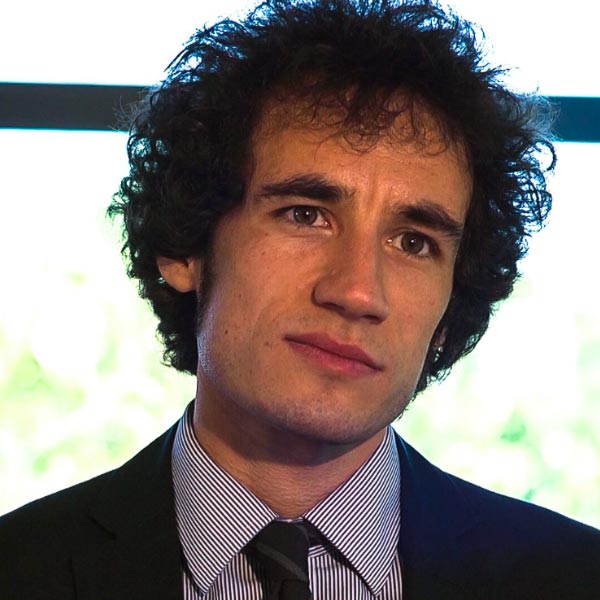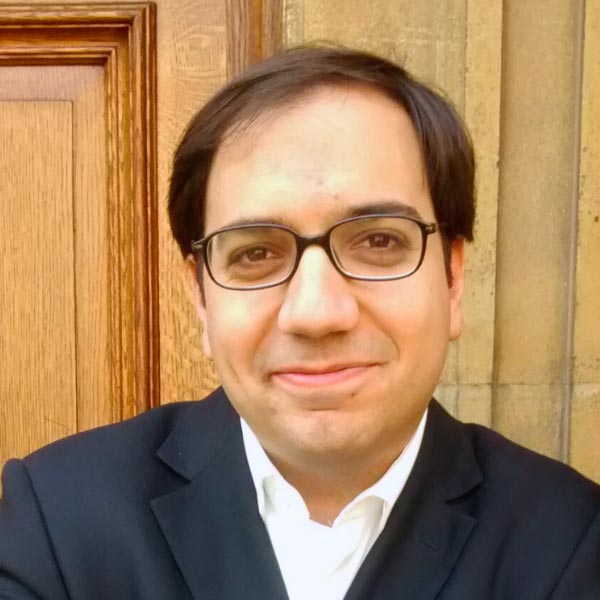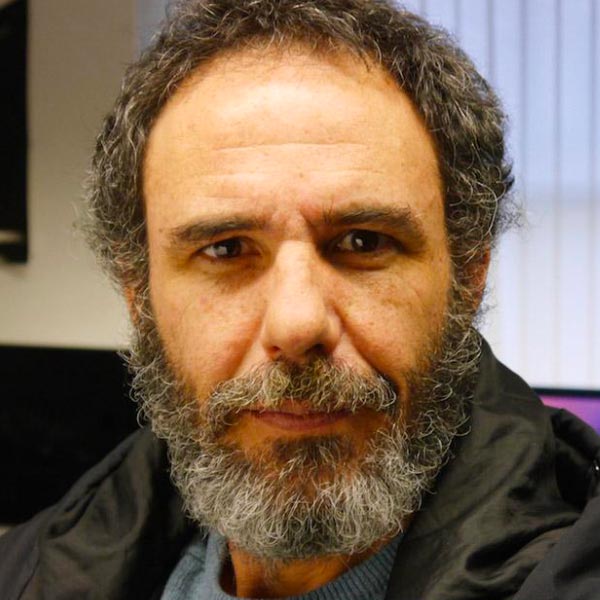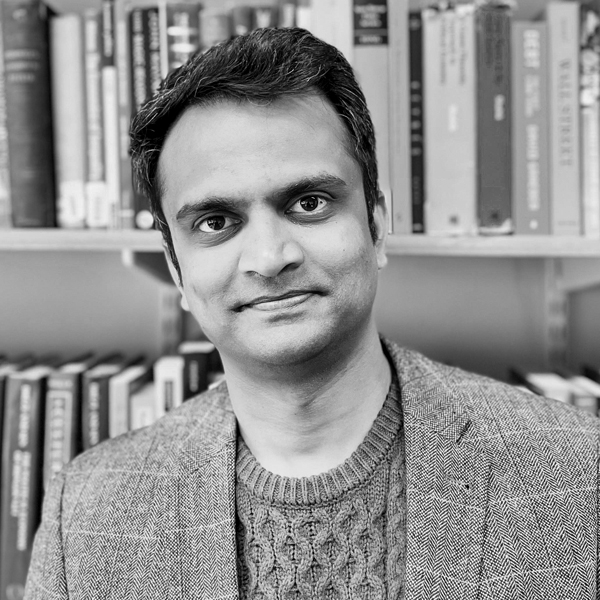The production team for this interview project is the following. The principal investigators, Ivano Cardinale, Constantinos Repapis and Ragupathy Venkatachalam are academics at Goldsmiths, University of London. Ricardo Leizaola, Lecturer in Visual Anthropology at Goldsmiths, was responsible for the camera work and video outputs. Jacob Vattakaven, a web designer, was responsible for the design, structure and presentation of the website.

Dr. Ivano Cardinale
Ivano Cardinale is a Lecturer in Economics at Goldsmiths, University of London. He is developing an approach to political economy that draws on structural economic analysis and social theory. He is also interested in the comparative analysis of economic theories. He is one of the interviewers for this project. He interviewed Professor Charles Goodhart in Series I and Dr. Ha-Joon Chang and Professor Tony Lawson in Series II.

Dr. Constantinos Repapis
Constantinos Repapis is a Lecturer in Economics at Goldsmiths, University of London. His research is on history of economic thought and economic methodology. He is the convenor of the BA Economics programme. He is one of the interviewers of this project. He interviewed Professor Sheila Dow and Professor Geoff Harcourt in Series I and Professor Julie Nelson in Series II.

Dr. Ricardo Leizaola
Ricardo Leizaola is a Lecturer in Anthropology at Goldsmiths, University of London. He is a documentary filmmaker and anthropologist specializing in visual anthropology and ethnobotany. His research interests include urban ethnobotany, ethnographic film, visual ethnography and information visualization. He is involved in the practical training in visual methods of research students, research staff and in the production of their audiovisual products. He was responsible for the camera work and video production of all six interviews.

Dr. Ivano Cardinale
Ivano Cardinale is a Senior Lecturer in Economics at Goldsmiths, University of London. He is developing an approach to political economy that draws on structural economic analysis and social theory. He is also interested in the comparative analysis of economic theories. He is one of the interviewers for this project. He interviewed Professor Charles Goodhart in Series I and Dr. Ha-Joon Chang and Professor Tony Lawson in Series II.

Dr. Constantinos Repapis
Constantinos Repapis is a Lecturer in Economics at Goldsmiths, University of London. His research is on history of economic thought and economic methodology. He is interested in the popularization of economic theory and the link between theory and public debate. He is one of the interviewers of this project. He interviewed Professor Sheila Dow and Professor Geoff Harcourt in Series I and Professor Julie Nelson in Series II.

Dr. Ragupathy Venkatachalam
Ragupathy Venkatachalam is a Senior Lecturer in Economics at Goldsmiths, University of London. His research covers topics in economic dynamics, computable economics, discrimination, development, and causal inference. He is also interested in the history of economic ideas, issues related to methodology and mathematical foundations of economics. He is one of the interviewers for this project. He interviewed Professors Jayati Ghosh, Anwar Shaikh and Vela Velupillai in Series III.

Dr. Ragupathy Venkatachalam
Ragupathy Venkatachalam is a Senior Lecturer in Economics at Goldsmiths, University of London. His research covers topics in economic dynamics, computable economics, discrimination, development, and causal inference. He is also interested in the history of economic ideas, issues related to methodology and mathematical foundations of economics. He is one of the interviewers for this project. He interviewed Professors Jayati Ghosh, Anwar Shaikh and Vela Velupillai in Series III.

Dr. Constantinos Repapis
Constantinos Repapis is a Lecturer in Economics at Goldsmiths, University of London. His research is on history of economic thought and economic methodology. He is interested in the popularization of economic theory and the link between theory and public debate. He is one of the interviewers of this project. He interviewed Professor Sheila Dow and Professor Geoff Harcourt in Series I and Professor Julie Nelson in Series II.

Dr. Ricardo Leizaola
Ricardo Leizaola is a Lecturer in Anthropology at Goldsmiths, University of London. He is a documentary filmmaker and anthropologist specializing in visual anthropology and ethnobotany. His research interests include urban ethnobotany, ethnographic film, visual ethnography and information visualization. He was responsible for the camera work and video production of all nine interviews.
Some notes on production and an apology to the viewers
The interviews can be seen not only separately, as stand-alone pieces, but also together as constituting a discussion that has nine participants grouped into three series. The three interviewees that form part of each series, we see, hear and read their words- the interviews are here to capture their opinion, views and an audiovisual testament of how they reason and reflect on their theories and life work. The interviewers are less visible. They do not have a voice or image, and yet they have an implicit presence in the videos as they ask the questions and have participated in the discussion that frames both the written and verbal message. Furthermore, each series has a reflective piece by one of the interviewers- who synthesize their own narratives of how these three interviews come together and what their message is. The other members of the production team are the cameraman who records the sound, image and puts together the video production and the web-designer who frames in a variety of ways what the website visitor sees and reads.
The intent of this project is to provide the website visitor with texts on the work of these nine academics, enveloped in layers of context and a narrative of what they are viewing, and how it fits together. At the same time we provide the viewer with enough material that will allow the unravelling and deconstruction of these simple narratives, as the visitor goes deeper into the work of these theorists and understands nuances of their approach that cannot be captured by the narratives constructed. And the journey for the visitor can continue by going into the published outputs of the academics, provided through the links in the brief biography section.
Helping the visitor in their journey is the deeper reason for a variety of devices that provide focus on different aspects of the answers; text and context. For each interview the visitor is confronted with three narratives, which are: 1) A textual excerpt section with fragments from the transcript that intends to convey key discussion points in a ‘headlines’ fashion. 2) The video excerpts that inevitably focus the viewer on audiovisual characteristics, while the interviewee is discussing key aspects of their work. 3) The complete transcript of the interview, which usually goes into substantial detail and occasionally offers references on texts that are explicitly discussed. These narratives do not outright contradict each other but they do bring out prima facie different aspects of the interview and the discussion. An example of how production focuses the website viewer on the different layers of context in the interview can be seen in the introduction of the videos. All introductions start with a silent-image view of the interviewee, and capture them as they are reacting to being welcomed by the interviewer- who cannot be heard or seen. The interviewee’s voice comes into the picture after the end of the introduction where the presence of the person has been established, so that the two aspects of the video, voice and sound are introduced at temporally distinct moments. The intention is the creation of a feeling of intimacy that reduces the distance between the viewer and the interviewee, by developing a visual environment that simulates, in a highly stylised fashion, how people would meet in a social setting.
This deception, or attempt of contrived familiarity between the viewer and the interviewee, is part of the effort to include a variety of different stimuli for the visitor that wants to learn more about these academics and their work. The point of this set-up is to help the viewer through the complex cognitive journey of learning a different language that these interviews all together represent a window to. And learning it in a way that allows them to view layers of meaning, that combine not only abstract theory, examples, beliefs but also an indication of the character of the person as she or he tries to explain their motivations on why they are thinking about economics the way they do. The hope is to provide the viewer with an informative journey- partly of their own making- as the website visitor is the reason why this process took place. These people spoke, someone asked questions and someone recorded, but the why is the reader. If they find this material useful in some way in their search for meaning in relation to economics and the economy, then something has been achieved.
A co-production of Goldsmiths Economics and ISRF.